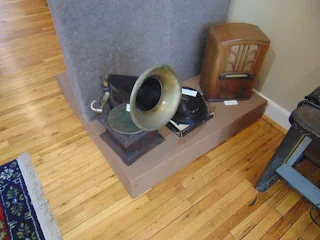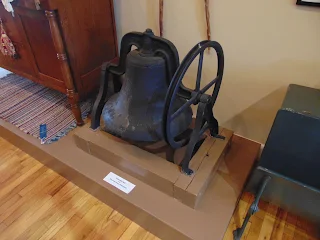Located on the first floor of the restored Flynn Office Building on historic Main Street in the city of Union, the Union County Museum houses some really amazing artifacts and displays highlighting some of the great history of Union County, South Carolina and its importance to the history of the United States.
For instance during the Southern Campaign of the American Revolutionary War there were at least two important battles fought in Union County in 1780: Musgrove Mill and Blackstock's Farm -- both of them Patriot victories.
Battlefield maps, uniforms from America's various wars, and weapons are displayed at the museum including an 1823 era cannon. Also included is a table on which the original South Carolina Ordinance of Secession was signed in 1860.
At the end of the War Between the States in April of 1865, Union County hosted Confederate President Jefferson Davis as he and the remaining members of his cabinet attempted to escape Federal government authorities. Among the items displays in the museum includes a silver tea service used during President Davis' visit.
Textile mills played a huge role in the local economy during the early 1900s and the museum displays many artifacts from the time.
The following are the photos that I took of my visit to the Union County Museum.
For instance during the Southern Campaign of the American Revolutionary War there were at least two important battles fought in Union County in 1780: Musgrove Mill and Blackstock's Farm -- both of them Patriot victories.
Battlefield maps, uniforms from America's various wars, and weapons are displayed at the museum including an 1823 era cannon. Also included is a table on which the original South Carolina Ordinance of Secession was signed in 1860.
At the end of the War Between the States in April of 1865, Union County hosted Confederate President Jefferson Davis as he and the remaining members of his cabinet attempted to escape Federal government authorities. Among the items displays in the museum includes a silver tea service used during President Davis' visit.
Textile mills played a huge role in the local economy during the early 1900s and the museum displays many artifacts from the time.
The following are the photos that I took of my visit to the Union County Museum.
Across the street at the nearby intersection is the historic Union County Courthouse and the 35-foot tall monument honoring Union County's Confederate soldiers and surviving veterans.
A brief history of the Union County Confederate Monument.
The thirty-five-foot obelisk monument, which is surmounted by a small pyramid of granite cannonballs, was originally located "in the middle of Main street at a point in front of the courthouse and on the highest point in the city" and erected in 1907 by the William Wallace Chapter, United Daughters of the Confederacy (UDC).
The dedication ceremony took place on Saturday, May 25, 1907. A speakers' stand was erected in front of the courthouse near the monument. Garland bearers, flower girls, and the Union cornet band led union's veterans in a parade from Hotel Union to the monument.
The band and a group of Union schoolchildren greeted the veterans with a rendition of "The Sunny South," a new song dedicated to the Confederate veterans. Reverend B.G. Clifford offered the invocation. Mayor Macbeth Young gave the welcoming address, and the band played "The Bonnie Blue Flag."
Four Union County veterans then unveiled the monument. They were Charner S. Greer, formerly a captain of Company A, 18th S.C.V. Regiment; James C. Shellteworth, formerly a private in the Tyger River Volunteers, Company D, 5th S.C. Volunteer Infantry Regiment; J.D. Eppes, formerly a private in the Macbeth Light Artillery; and W.T. Betsill, formerly a private in the Congaree Troop, Company D, The Hampton Legion Cavalry Battalion.
While little girls decorated the monument, the assembly sang "Tenting on the Old Camp Ground."
After the band played "Taps," the beloved Reverend A.A. James, chaplain of the 18th S.C.V. Regiment during the entire war, introduced Colonel Asbury Coward, the speaker of the day. A crowd of 3,000 to 5,000 filling the streets of Union interrupted him several times with bursts of enthusiastic applause. Reverend James offered the benediction, and the band led the 500 veterans in a parade to the graded school grounds for dinner. The monument was later moved to its present location, probably because of traffic congestion.
(Source: A Guide to Confederate Monuments in South Carolina: "Passing the Silent Cup" by Robert S. Seigler, pg. 491.)











































I live in Spartanburg so I've been to the Union County Museum a couple times. Outstanding collection of artifacts. My favorite is the painting of General States Rights Gist and Black Confederate Wylie Howard, which I'm glad you posted a photo of and posted here.
ReplyDeleteVery interesting. Thank you.
ReplyDelete